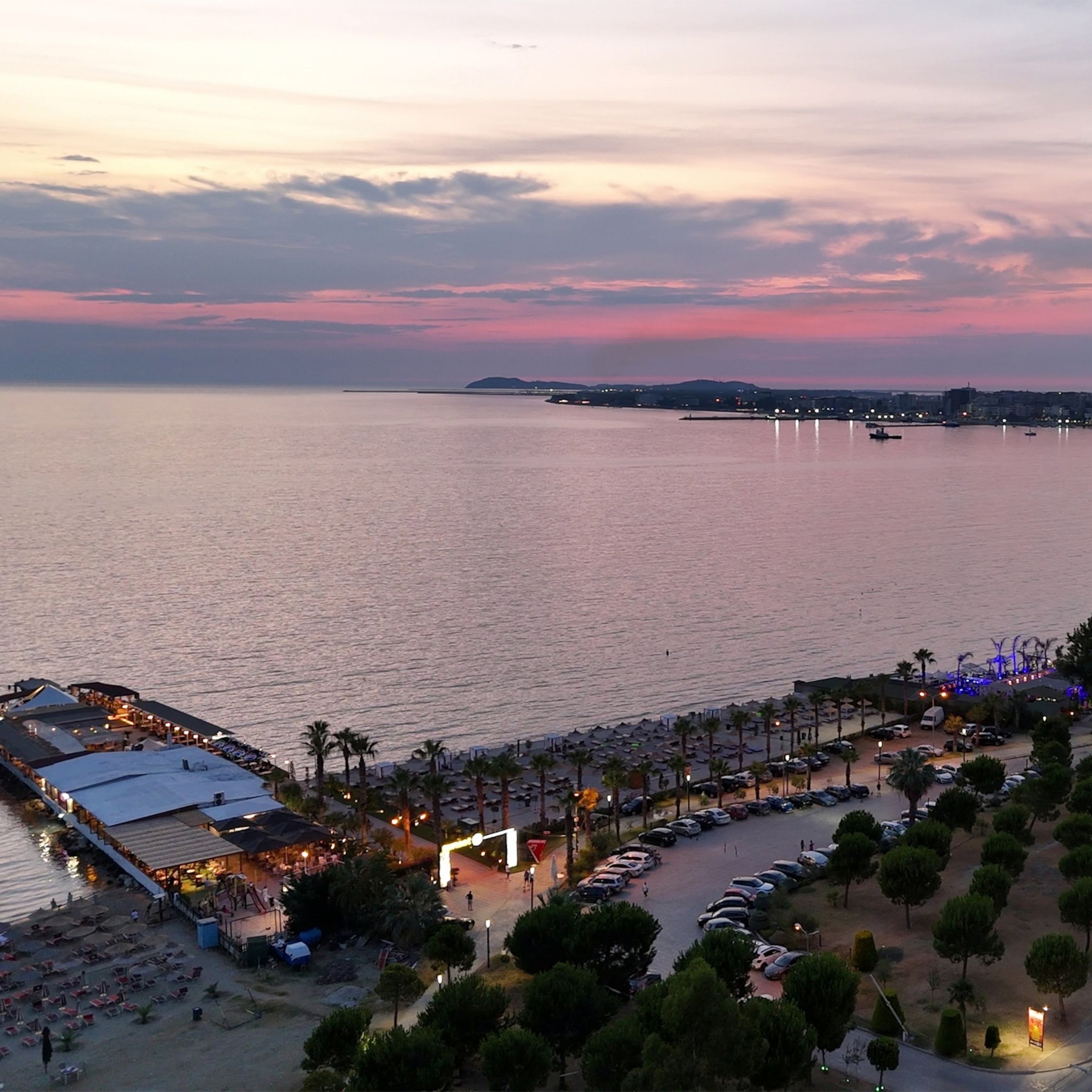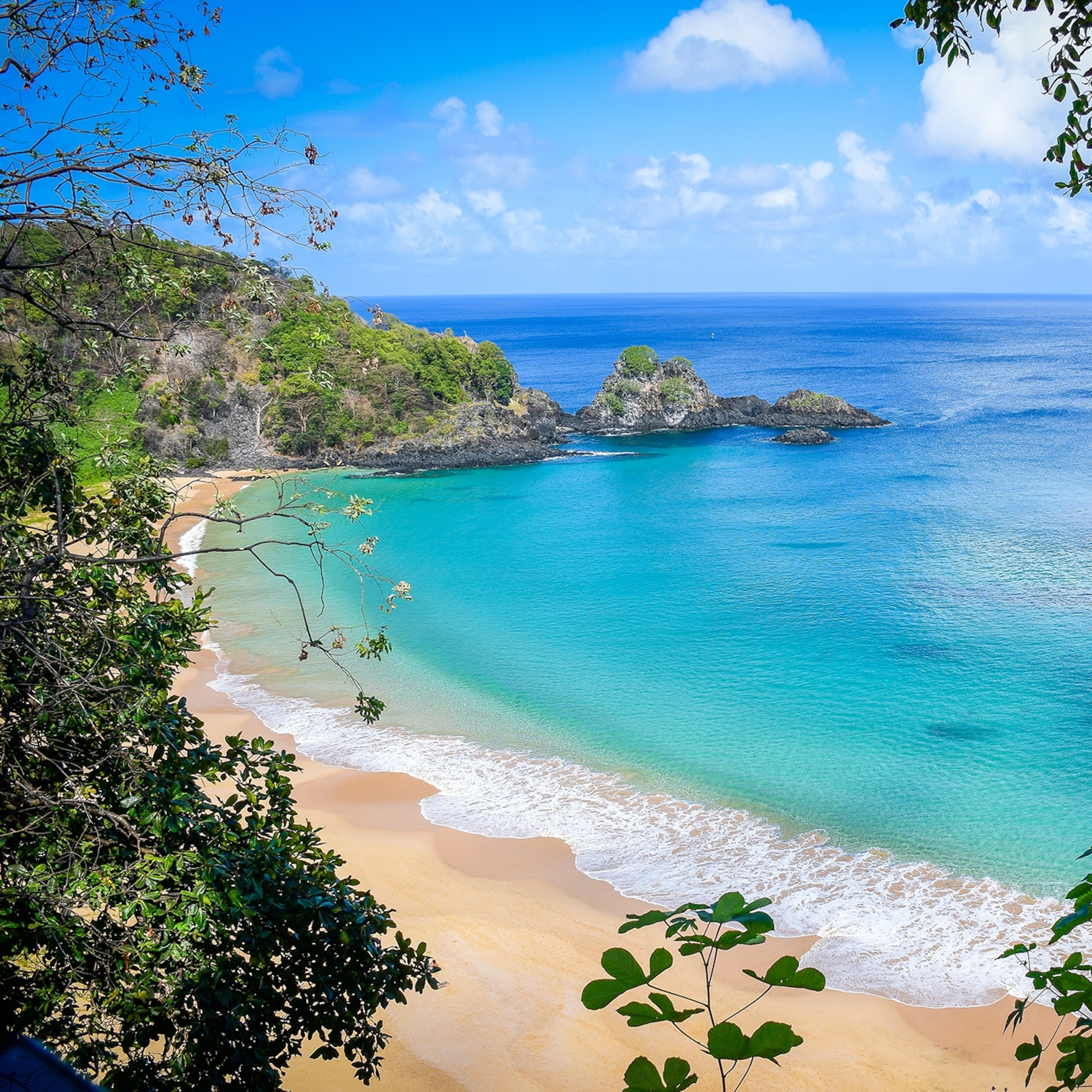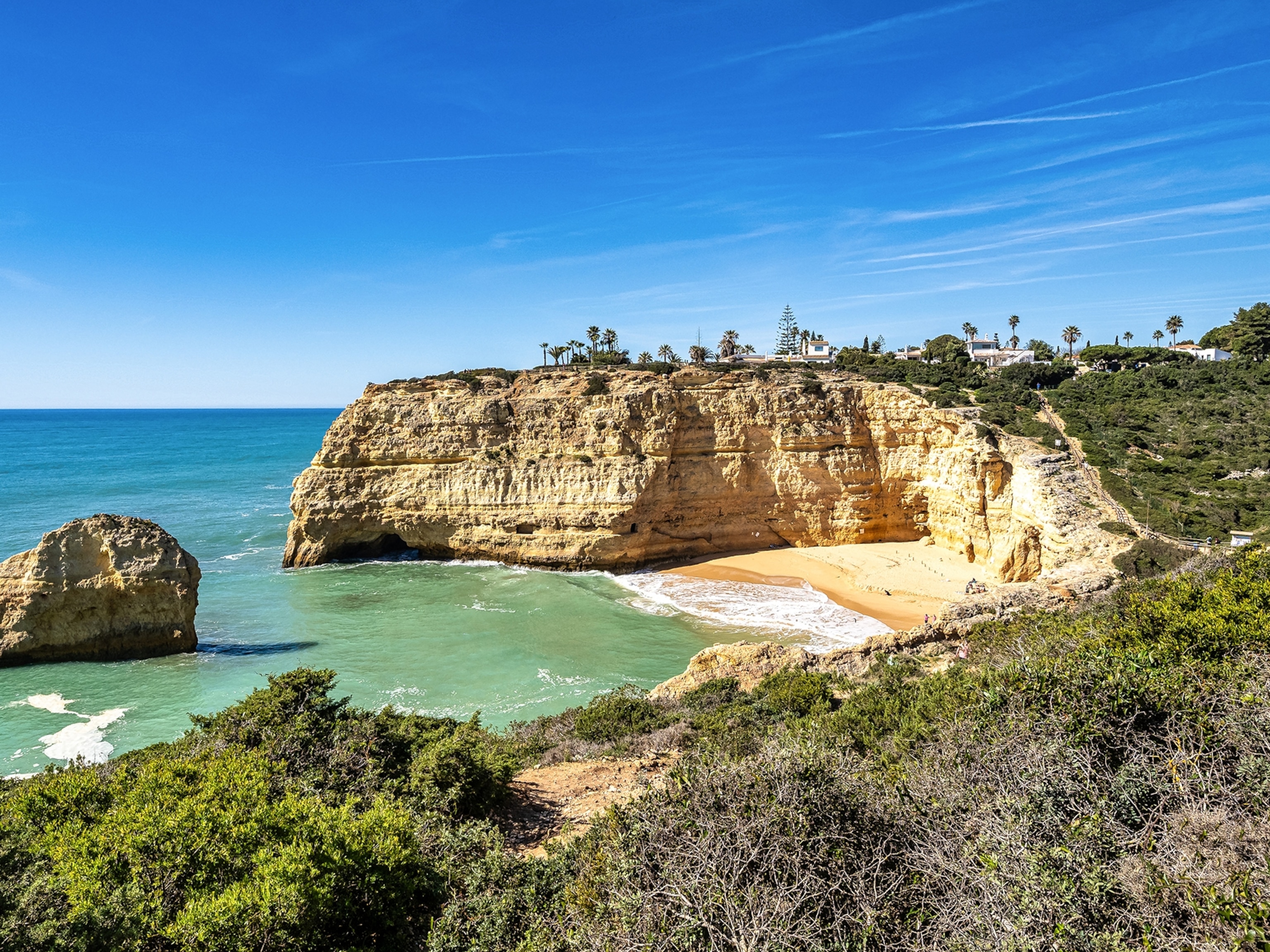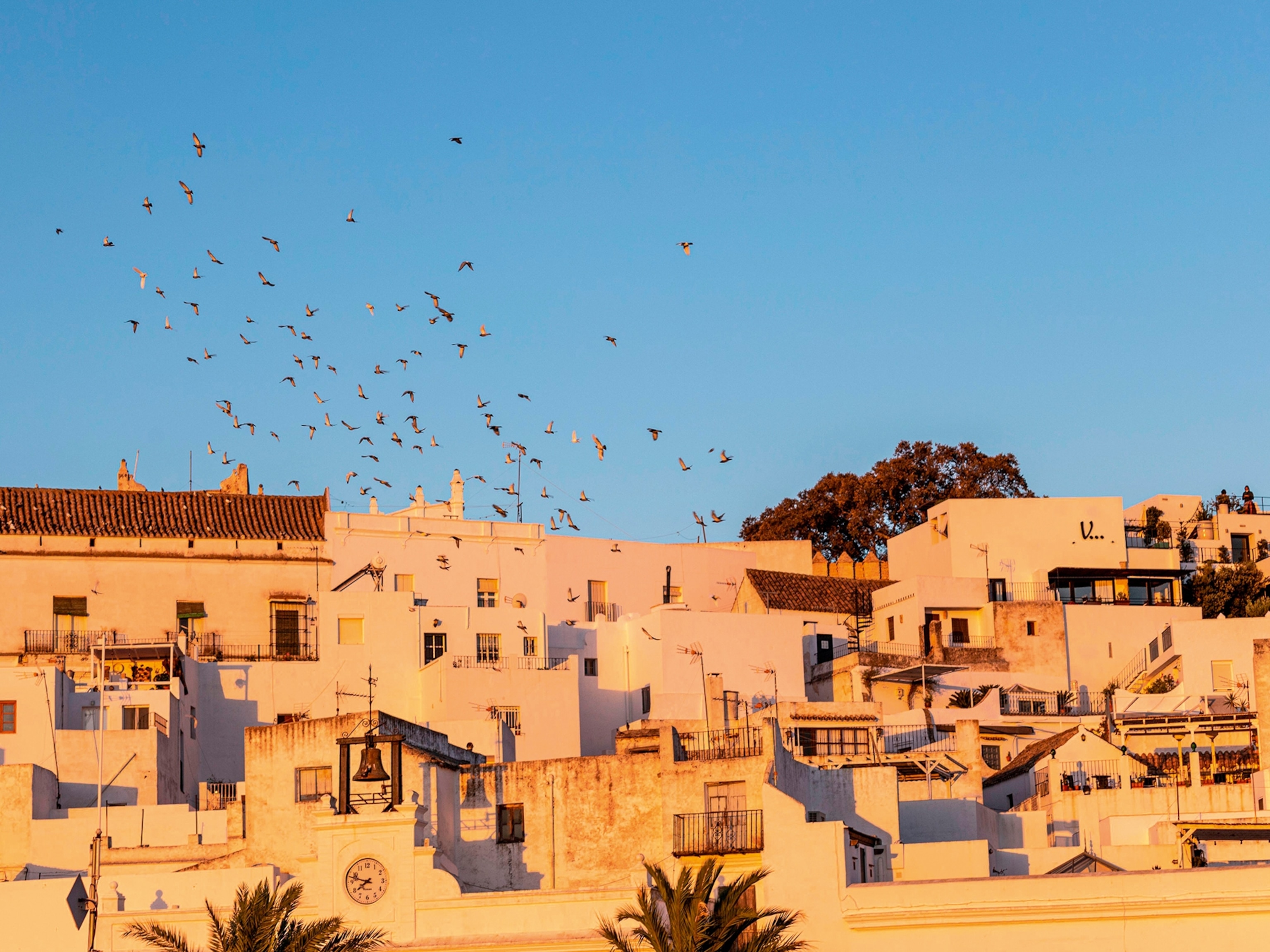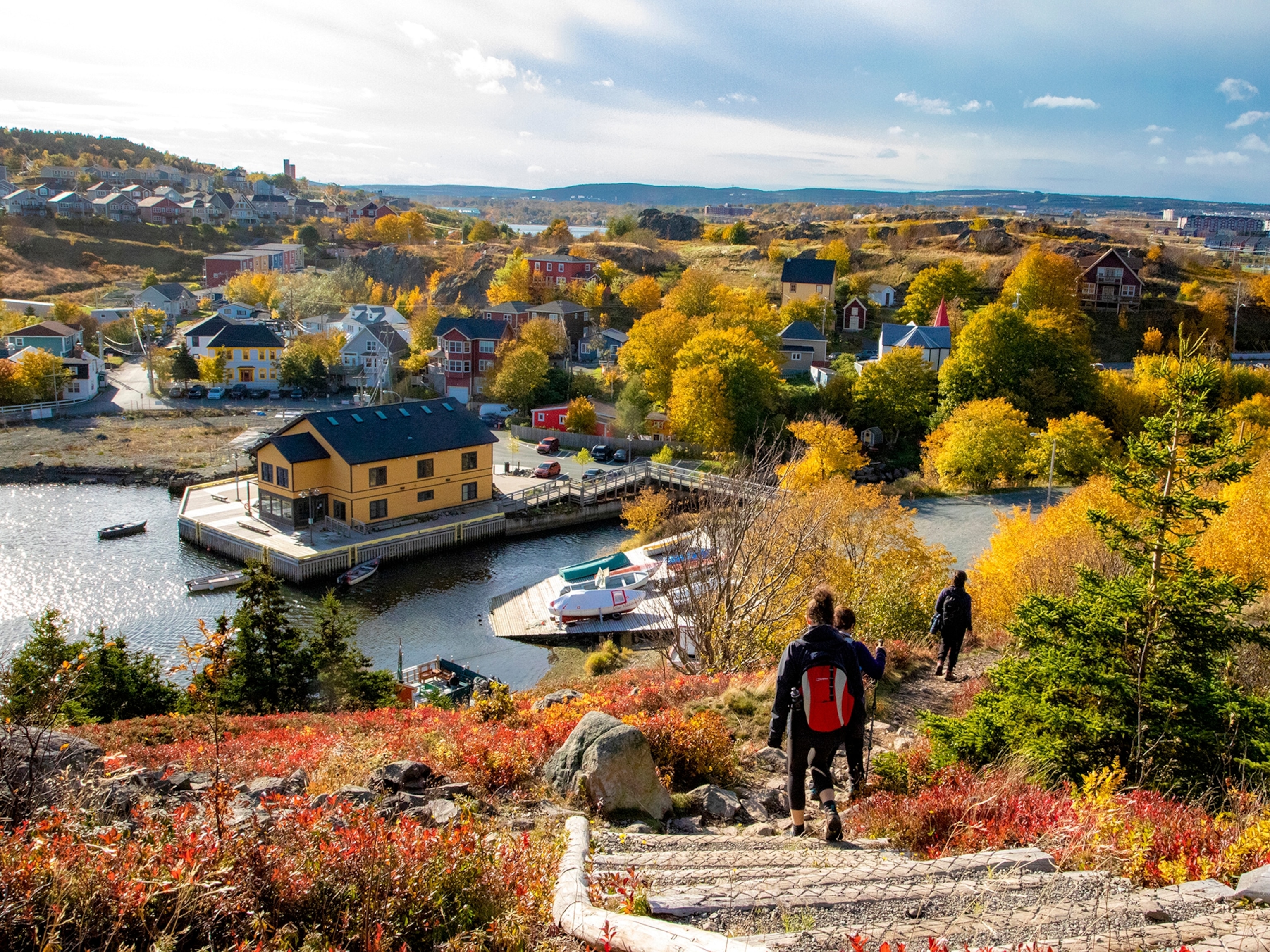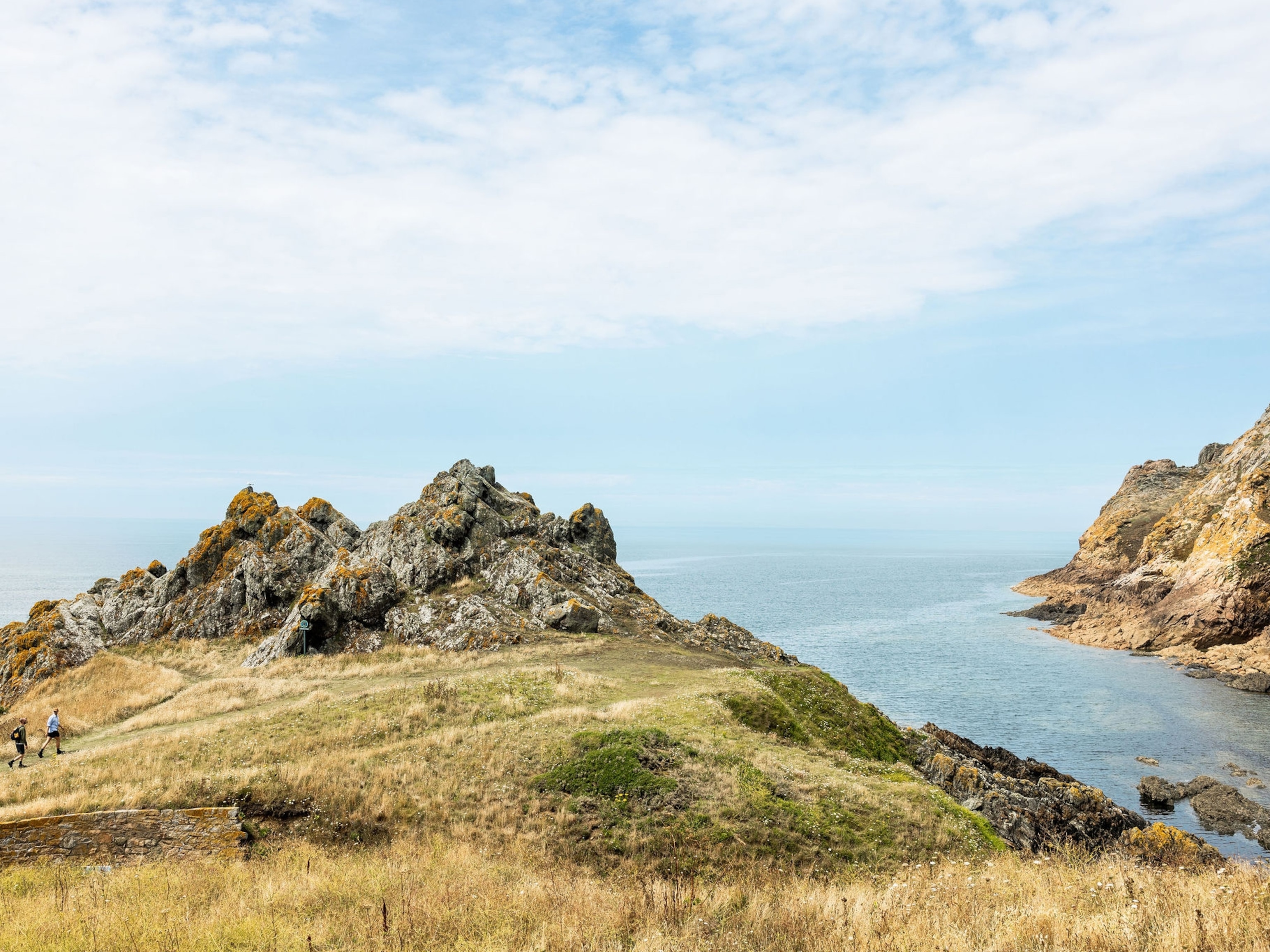
How to spend the perfect weekend on the Northumberland coast
Rich in wildlife, with miles of empty beaches, picture-perfect seaside towns and a battle-filled history, the Northumberland coast is an area as beautiful as it is intriguing.
As the tide retreats from the Northumberland coast, and sandbanks begin to appear, listen as the seals start to sing. A keening wail, like the wind whistling through an empty hall, it’s a chorus both strange and beautiful; a perfect soundtrack to this wild stretch of coastline.
Running for 40 miles between Berwick-Upon-Tweed and Amble, and designated an Area of Outstanding Natural Beauty (AONB) in 1958, the Northumberland coast is a wildlife-lover’s paradise, where puffins skim the waters of the North Sea for sand eels, roe deer pick their way through wildflower meadows on Holy Island and dolphins swim off Embleton Bay. Onshore, ringed plovers and sand lizards build nests in Northumberland’s dune-backed beaches, loomed over by castles such as Bamburgh and Alnwick: fortresses that speak of more turbulent times, when the area was of huge strategic importance to both England and Scotland — from 1400 to almost 1700, Northumberland was a battleground.
With the annals of history explored, head to a pub for hearty fare and lively conversation, where menus typically revolve around regional fish and you’ll likely taste the best lobster of your life. Kippers are another local claim to fame, traditionally eaten at breakfast with thick-cut bread and plenty of salt. Or simply wander the pretty streets of the little towns punctuating this wild coastline, where gift shops sell homemade fudge, bunting flaps merrily overhead and the songs of distant seals whisper on the breeze.

Day one: castles & coastline
Morning
Walk the Pilgrims Way to the Holy Island of Lindisfarne: a great way to start the day, safe in the knowledge that the best coffee in Northumberland is waiting at the other end of your hike. Park near The Barn at Beal for the view — a vast, empty bay stretching away beneath a big sky — before following the wooden poles that mark the easy three-mile route. Organise a tour with Footsteps in Northumberland, which tells a fascinating story of the saints, sinners and Viking invasions on the island where early Christianity flourished and England’s first monastery was sacked in 793. Refuel with a brew and slice of banana bread at Pilgrims Coffee before exploring the island’s castle, coves and wildflower meadows.
Afternoon
Heading south along the coast, pause for a crab salad or fennel-stuffed sea bream at The Potted Lobster on Bamburgh high street. Then it’s time for some royal history at nearby Bamburgh Castle. Rising gloriously from the beach, the 1,400-year-old fortress is the stuff of fairytales. Home to a long line of kings, from Henry VI to James I, it’s a maze of echoing halls, grand boudoirs and hidden guardrooms. Allow at least an hour to explore the nine-acre site, opting for an audio-guide to really bring the past to life. Then, before the sun slips below the horizon, leave time for the five-minute walk to the beach, which almost rivals any in the Caribbean for beautiful, colour-soaked scenery.
Evening
Winters can be bitter here, and summers temperamental, but the all-too British weather has meant locals have perfected their pubs, and there’s no shortage of them to be found along the coastline. Head to The Jolly Fisherman in Craster, a short hop from Bamburgh, where worn leather sofas encircle an open fireplace, views stretch out to sea and chef Kevin Mulraney serves gastropub grub with standout crab dishes. The village also lays claim to the best kippers on the coast: family-run L Robson & Sons has been curing fish for four generations and sells a selection of smoked seafood from a wooden hut on the harbour. For something more upmarket, try The Craster Seafood Restaurant, where kippers are served with seasonal sides.

Day two: islands & earls
Morning
More than 30 islands lie off Northumberland’s coast. Best known are the Farnes, but Coquet Island, at the southern tip of the AONB, is closer to the mainland and quieter in peak season. Adventure Northumberland offers guided kayak trips around Coquet’s remote, wind-swept shores where you can spot seals in their hundreds. Largely uninhabited, the island is a crucial site for seabirds, too; 40,000 jostle for nesting space in summer, so sightings of puffins and roseate terns are guaranteed. Back on dry land, peruse Amble harbour’s pop-up craft and snack stalls, before lunch at The Fish Shack. Since chef duo Dave Myers and Si King of the Hairy Bikers visited in 2020, booking ahead is essential.
Afternoon
Earl Grey is sipped the world over, but few know it was invented at Howick Hall. Meander up the coast to visit the magnificent Georgian manor where, in 1830, Earl Charles Grey added bergamot to his tea leaves, offsetting the lime from water in Howick’s well and creating the blend we know today. Walk the hall’s wonderful gardens, spanning 65 acres, before sitting down to a good old-fashioned cream tea. Alternatively, adrenaline junkies can head 20 minutes back to the sea, where Adventure Northumberland runs coasteering expeditions. A catch-all term for slithering, sliding and jumping off rocks, it’s a daredevil way to explore this dramatic stretch of shoreline, full of hidden coves and rocky outcrops.
Evening
In the heart of Alnmouth, a pocket-sized village with a couple of pubs, a delicatessen and a gift shop selling local pottery, don’t miss The Whittling House. Whether you’re staying at the boutique hotel or not, dinner here is a must. Try plump, tender scallops surrounded by an indulgent amount of garlic butter, and just-caught lobster, grilled to perfection with a truffle and parmesan crumb. Leave space for the lemon curd and elderflower cheesecake. Afterwards, head next door to The Red Lion Inn. Nightlife on the coast is fairly non-existent — you won’t find any beach parties in the AONB —but the pubs are good fun. Order a beer from the Hadrian Border Brewery; you’re not far from the ancient Roman barricade, after all.
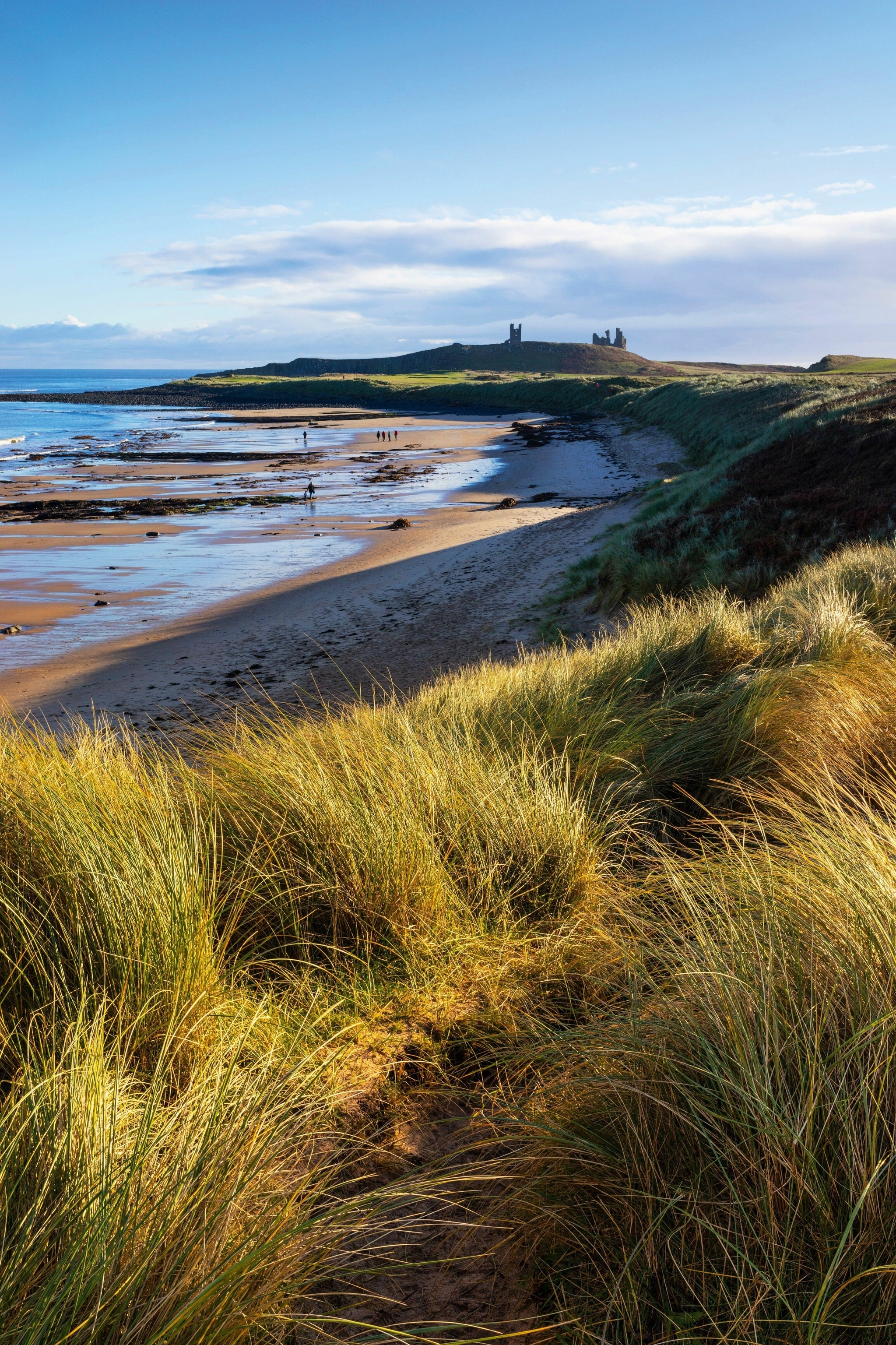
Top five wildlife species to spot
Puffins
From April to July, more than 55,000 puffins descend on the islands off the coast to breed. This is the best time to see the fluffy black heads of pufflings poking up out of nests, while adults can be seen with sand eels hanging from their beaks.
Seals
Thousands of Atlantic grey seals call the Northumberland Coast home year-round with pups best seen in November when they’re at their fluffiest. Inquisitive and friendly, seals follow behind boats to pop up when you least expect it.
Lumpsuckers
Go diving in early summer and you’ll likely encounter lumpsuckers, a fish as fantastic as the name suggests, that wobbles through the North Sea as if drunk. They thrive in the reefs here, sharing the water with lobsters, crabs and spotted rays.
Roe Deer
You’ll likely spy the white rear of a roe deer darting into the long meadow
grass or bracken on Holy Island. These tiny animals stand less than a metre tall, bucks clearly distinguishable from does by small, forked antlers.
Dolphins
Sightings of bottlenose dolphins are becoming increasingly common off the coast of Northumberland. Look for unusual ripples on the surface of the ocean, with dense flocks of seabirds circling slowly overhead. Watch long enough and you might spot dolphins leaping from the water to catch herring.
Top three fairytale castles
Alnwick Castles
Sprawling Victorian gardens, Italianate interiors and a claim to fame as Hogwarts in two Harry Potter films, Alnwick Castle is a masterpiece of medieval architecture. Built during the Norman conquests, it’s the home of the Duke and Duchess of Northumberland, whose ancestral name of Percy appears in Shakespeare plays. Visit for a glimpse into British history, and even a broomstick lesson.
Chillingham Castle
Chilling by name, chilling by nature: this 13th-century fortress bills itself as Britain’s most haunted. Six ghosts are said to wander its rooms, including the Radiant Boy, whose cries echo in corridors at midnight. Set within rolling countryside half an hour inland from Seahouses, the castle even has eight rooms for brave travellers to spend the night, joining a night tour to hear more about the castle’s ghostly residents.
Warkworth Castle
The towering ruins of Warkworth Castle stand guard over the River Coquet, which snakes its way out to sea at the southern end of Northumberland Coast AONB. Add on a side trip to Warkworth Hermitage, a chapel carved out of the cliff face, accessible only by boat. Check opening times before you go; they’re more limited than the neighbouring fortress.
Three more coastal hikes
The Northumberland Coast Path, a stunning, 62-mile route running from Cresswell to Berwick-upon-Tweed, is officially divided into six sections. Here are three walks to try.
Seahouses to Craster (10 miles)
Begin in Seahouses, a lively fishing town and gateway to the Farne Islands. Follow the coast south, climbing sand dunes and picking your way through bracken. This is a rugged stretch of coastline, where views span across slate-grey North Sea waters and you’ll likely have only kittiwakes for company. Refuel mid-point at The Ship Inn in Low Newton, a gastropub run by a animated mother-daughter team, famed for fresh lobster. Continue past a row of ramshackle beach huts towards Dunstanburgh Castle, a crumbling 14th-century fortress standing on a remote headland. Carry on another mile for a warm welcome at the white-washed cottages of Craster, and from local bar staff in The Jolly Fisherman.
Cresswell to Hauxley Nature Reserve (seven miles)
Sleepy Cresswell marks the start of the Northumberland Coast Path. Head north to Druridge Bay, a seven-mile stretch of dune-backed beach where avian enthusiasts should stop to spot shore larks with striking yellow throats and the fluffy white plumage of snow buntings. If time allows, make a short detour inland to Ladyburn Lake, a sprawling body of water surrounded by meadows, before veering right towards the coast and Hauxley Nature Reserve. Northumberland Wildlife Trust took this former coal mine into its care in 1983, and the 80-acre site is now home to a healthy population of otters, red squirrels and badgers. Refuel with coffee and cake at the lakefront cafe, onsite.
Berwick-upon-Tweed coast and walls (three miles)
A stone’s throw from the Scottish border, this relaxed ramble starts and ends in Berwick-upon-Tweed. Walk a small section of the Northumberland Coast Path, heading south down the beach to admire the red-roofed lighthouse perched on a windy promenade. Then turn inland, walking on the Elizabethan ramparts encircling the town — some of the best preserved fortifications in Europe. They were much needed: over the course of Berwick’s history, the town changed hands between the English and Scots 13 times. Centuries of shifting allegiances have left the locals (known as Berwickers) with an inimitable sense of independence; even their accents are unique, carrying a hint of both countries.
How to do it
Take the train to Newcastle-upon-Tyne. From there, hire a car to fully explore the Northumberland Coast. Enterprise and Europcar both have branches in the city.
The Whittling House in Alnmouth has doubles from £150, B&B.
